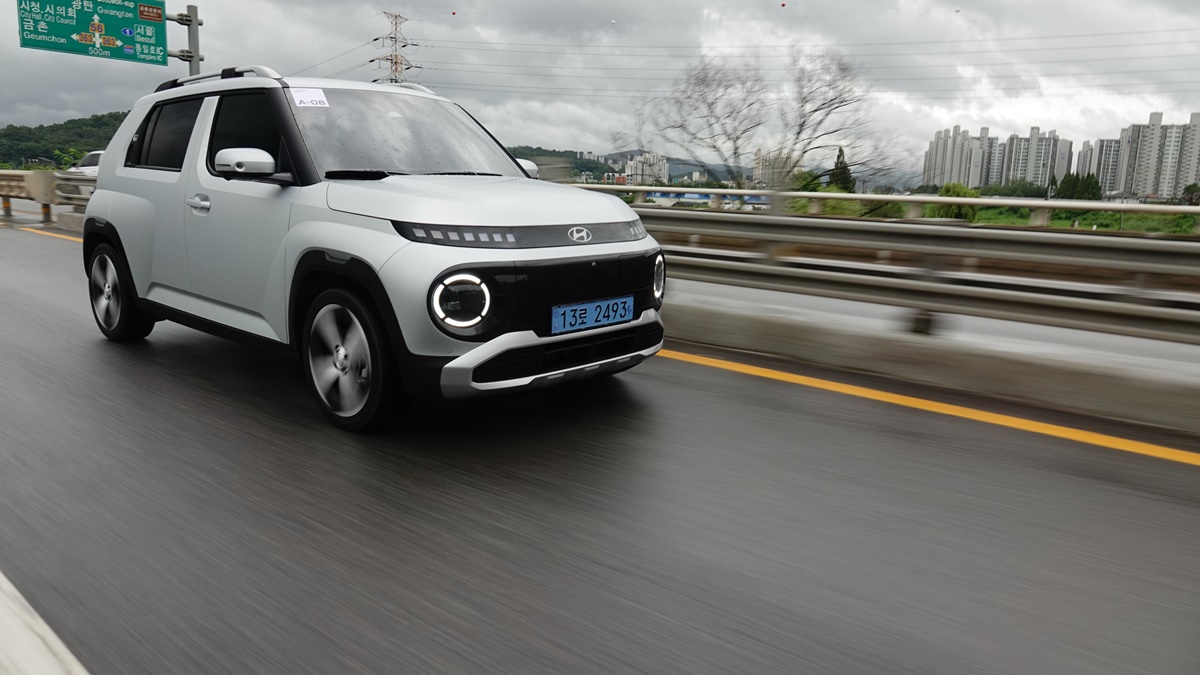
The Casper and Casper Electric are entirely different. The former is a kei car while the latter is a compact vehicle. The engine and motor, as well as their power sources, are different. They also differ in size and intricate designs. They could almost pass for entirely different models.
The Casper Electric debuted alongside a typhoon. On the day when cicadas filled the streets of Seoul, I drove the Casper Electric.

The Casper Electric made its first appearance at the Busan Mobility Show. There are three trims: a premium version focused on reasonable pricing, the Inspiration focused on range per charge, and the off-road styled Cross. Initially, only the Inspiration model has been rolled out, with Premium and Cross to follow sequentially.
Upon first entering the car, I instinctively reached up to touch the roof seam, a habit of mine. As I settled into the driver’s seat and casually extended my hand, I was taken by surprise. For a car of this stature, I expected a slight gap allowing fingers to slip through to be acceptable. It was the exact opposite. The seams were meticulously finished. I wanted to show it off compared to the poorly finished seams in some other cars. From that well-crafted seam, I could see the dedication of those who made this vehicle. This is not a car made haphazardly.
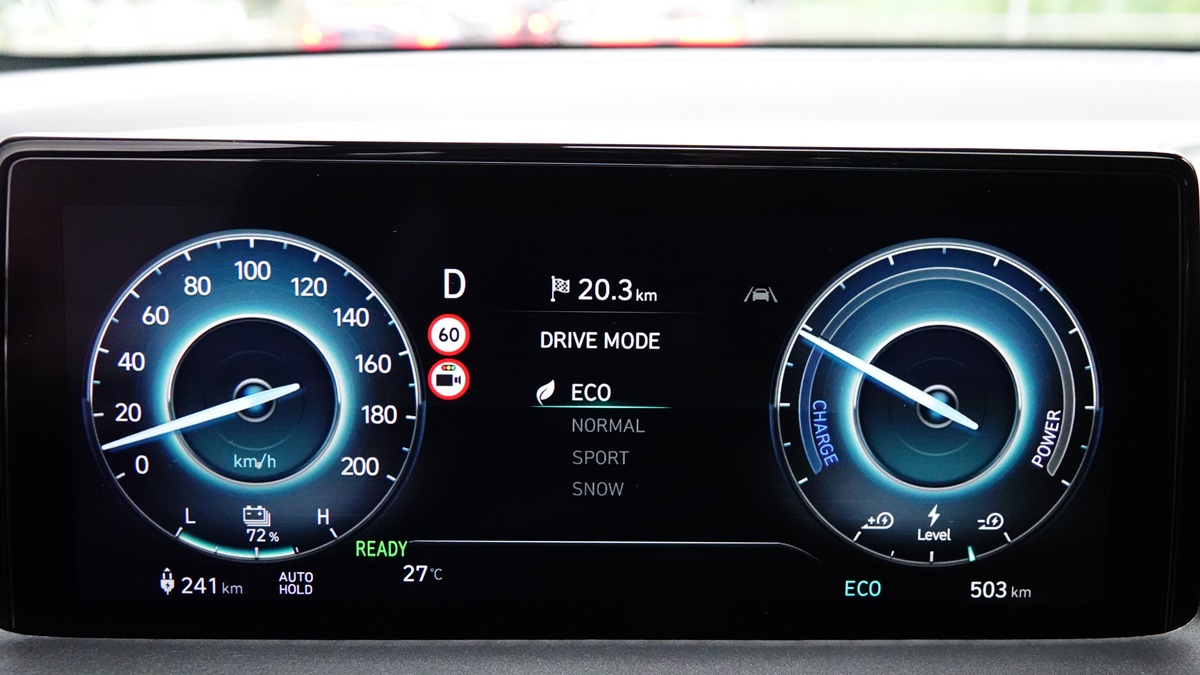
Come to think of it, the interior materials are quite upscale for this car class. My fingertips could tell the difference. The materials used in the dashboard, seats, and steering wheel surpass the usual standards. The only honest-looking plastic material you’d expect in this price range is found on the door panels.
It is larger than the Casper; significantly larger. Its dimensions are 3,825 x 1,610 x 1,575 mm. The wheelbase is 2,580 mm, which is an increase of 180 mm, while the trunk length has been extended by 100 mm. This effect is palpable in the rear seats. By sliding the rear seats back, there is enough space for an adult to sit comfortably. The absence of a center tunnel also greatly aids efficient use of space.
Pixel graphics catch the eye first. This is a hallmark of Hyundai’s electric vehicles. When you press the brake, the lights showcase a beautiful pixel graphic. Although impressive, the rear lamps of the previous Casper completed with geometric patterns are also eye-catching, but the pixel graphic brake light reveals the DNA of an electric vehicle beautifully.
These days, the battery is the star of the show. Everyone seems to be promoting their batteries first. You start to wonder if you are buying a car or a battery. The Casper Electric is powered by a battery supplied by LG Energy Solution. More specifically, it is described as “a battery made by the joint venture between Hyundai and LG Energy Solution.”
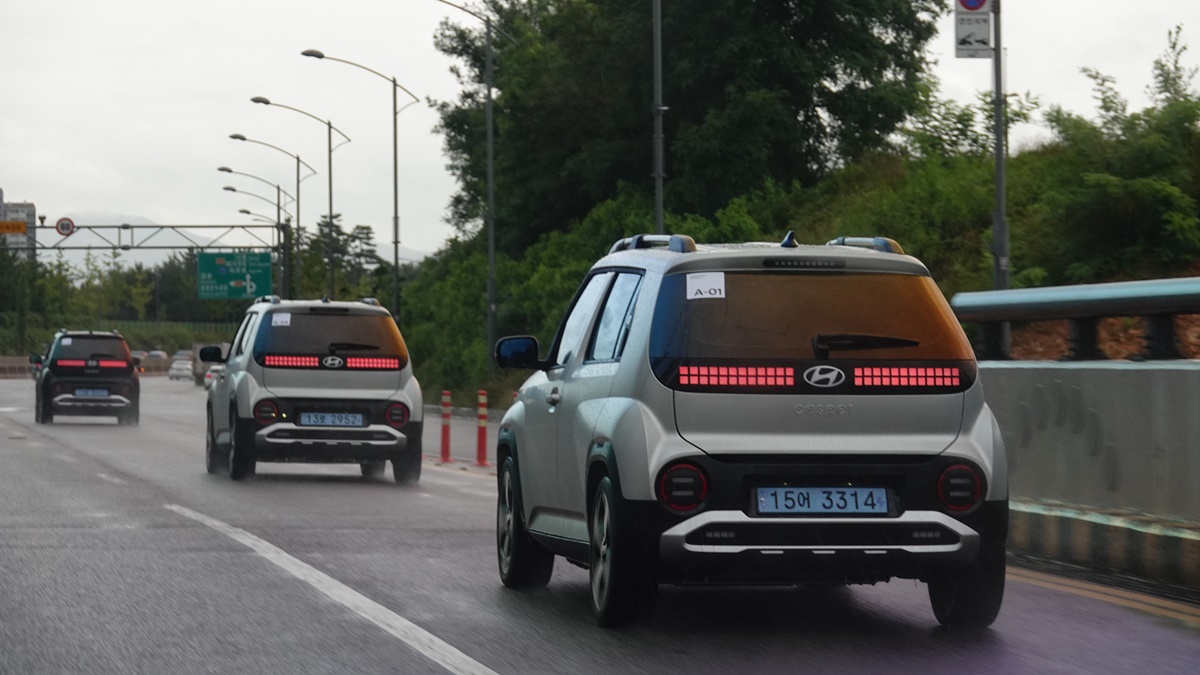
It features a 49 kWh NCM lithium-ion battery. The test car with 17-inch tires was certified to travel 295 km on a single charge, while the 15-inch tire variant is rated for 315 km. This range fluctuates depending on the season, so it’s best to use it as a rough reference rather than a strict guideline.
If you typically charge the battery to 80%, you can assume that about 70% of it will be actually used since you’ll want to start charging again when the battery level drops to around 10%. The battery is used in between the 10–80% range, during which the charging occurs as well. Hence, the range per charge will be similarly reduced.
If it’s not winter, you can drive economically in eco mode, which could allow for longer distances than the certified range. While I didn’t measure the mileage separately during my test drive, the gauge showed a cumulative mileage of 465 km with an efficiency of 5.0 km/kWh, and while pushing through the heavy rain in sport mode for 38 km, it displayed an efficiency of 6.2 km/kWh. The certified efficiency is 5.2 km/L.
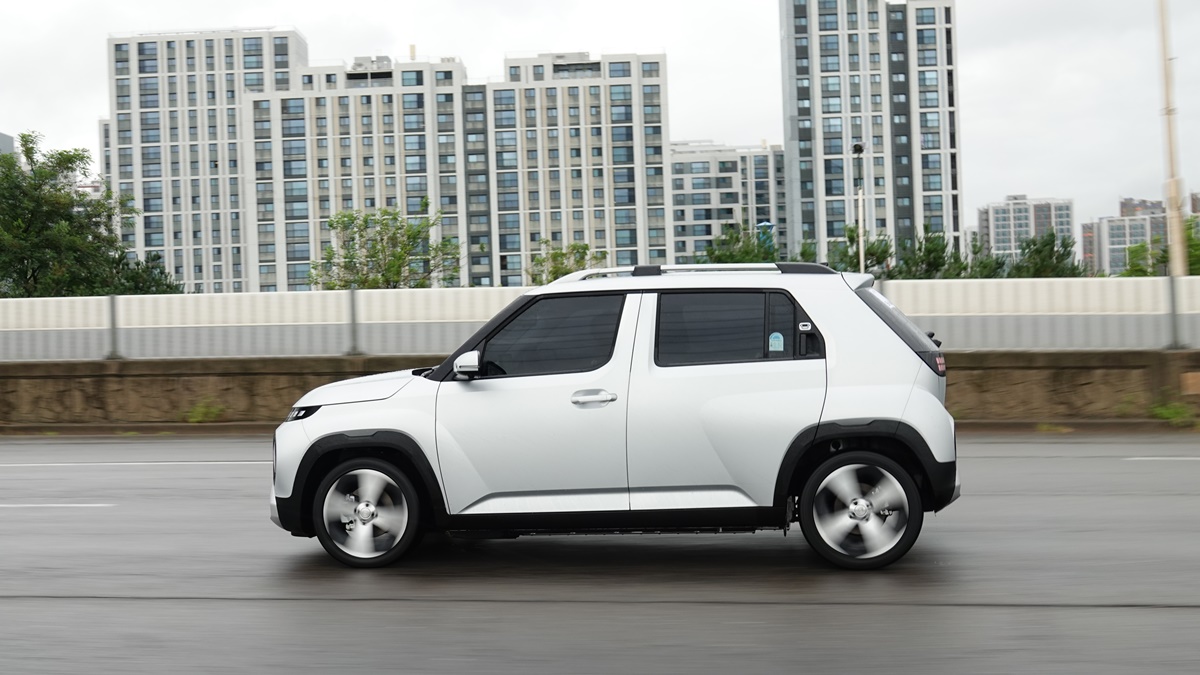
The unique acceleration of an electric vehicle is impressive. You experience a sensation almost akin to sports cars, where the seat pushes against your back. The reaction to pressing down on the accelerator is remarkable, with the motor sound being low but prominent. If you fully depress the accelerator from a standstill, the tires might even spin momentarily. The distinctive rotational feel of the motor is evident.
The motor boasts a maximum output of 84.5 kW, which translates to about 115 horsepower. With 1 horsepower handling 11.8 kg, it seems plausible to hit 100 km/h in around 11 seconds; however, the actual perceived time feels much quicker.
The smoothness of the acceleration is due to the low center of gravity. With the heavy battery placed at the bottom, the lower center of gravity enhances driving stability, showcasing the formula that electric cars follow.
If you are surprised or impressed by the Casper Electric, it may suggest you underestimated this vehicle. Once you experience driving it, the preconceived notion of “smaller cars are all the same” disappears.

Everything you need is here. The driving assistance system accurately maintains distances between vehicles and keeps the car centered in its lane. Additionally, the steering wheel features an ambient mood lamp with interactive pixel lights, and inside and outside the car, there’s a V2L outlet to use 220V, as well as a navigation-based smart cruise control function. Essentially, nearly all known safety and comfort features have been included.
Moreover, there’s an additional innovative feature newly implemented in the Casper Electric: the ‘Pedal Misoperation Safety Assist (PMSA)’ system. If there’s an obstacle within 1 meter and you hastily press the accelerator, it will interpret this as a misoperation and restrict output or engage emergency braking. This means it detects if you are pressing the accelerator when you should be braking. This adds another safety measure to the vehicle.
There are joys in driving an electric vehicle, too. The i-Pedal Drive combines accelerating and braking into one; you can control the car using just the accelerator pedal. The unique driving feel of being pulled back as if someone is tugging you creates excitement. Also, the regenerative braking system uses paddles, allowing you to experience levels of regenerative braking, which adds to the fun.
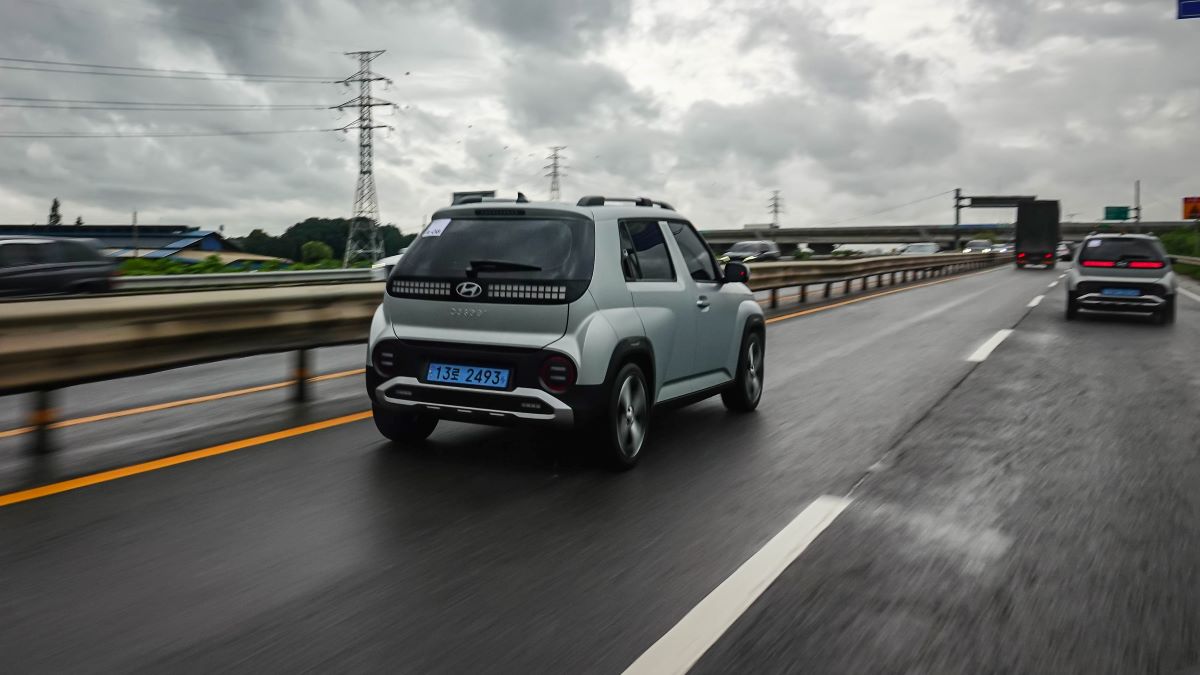
When it comes time to brake, you essentially have two choices: to press the brake or to use the paddles to reduce speed. If you have the time, use the paddles; if you don’t, opt for the brake pedal. Mastering the car will hinge on how well you can become friends with the paddles.
The test car, the Casper Electric Inspiration, priced at 29,900,000 won after tax benefits. The electric vehicle purchase subsidy in Seoul is 6,400,000 won.

I want to raise it as a model that shakes up the market like a typhoon, but the market has cooled off to the point where it feels like the heat of midsummer is irrelevant. Following a little-known gap in the market, the Mercedes electric vehicle fire has hit the market hard.
Blaming the market serves no purpose. If the vehicle’s safety is recognized, it will succeed; if not, it will be eliminated. A crisis is just another name for opportunity. Some will overcome it triumphantly, while others will fall behind.
Oh Jong-hoon, direct commentary:
Fast charging isn’t possible. Even connecting to a 350 kW charger is futile. It supports a maximum of 120 kW. Hyundai claims it takes 30 minutes to charge the battery from 10% to 80%. This is a disappointing factor.
The paddles are labeled left + and right -. Pulling the left one for an extended period applies stronger braking. Pulling the right one releases it. The labeling of the paddles with +- seems incorrect, which is confusing.
Oh Jong-hoon yes@autodiary.kr

